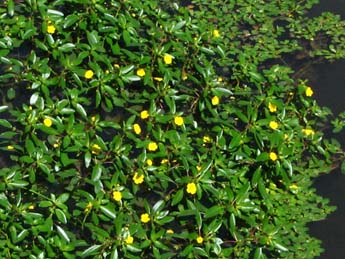


Ludwigia grandiflora is a kind of water plant of the family of onagraceae and is native of South America.
It was introduced in France for its aesthetic qualities. There are approximately 75 sorts of Ludwigia most of which are considered intrusive.
Ludwigia grandiflora is still sold, today still, for the ornamentation of aquariums and garden ponds. This amphibian plant presents a capacity of adaptation, colonization and important proliferation.
Ludwigia grandiflora has no predators or no parasites which could limit its growth and proliferation.
On the river the Charente, the proliferation of the ludwigia grandiflora generates disturbances in the environment, such as the loss of biodiversity or the change of the quality of the water and also constitutes a nuisance for the human activities such as fishing or other river activities.
The Brazilian water milfoil comes from Central and subtropical America. This plant was introduced in France at the end of the 19th century. We also find it in Southern Europe, in the United States, South Africa, Southeast Asia and New Zealand. It thus adapts very quickly to diverse types of habitats.
It is an amphibian water plant, it may be partially apparent or immersed. Its stems lie on the surface the water. They can reach 3 to 4 metres in length for a diameter of some millimetres.
The Brazilian water milfoil is considered as an intrusive plant because it suffocates the other plants and can thus provoke their disappearance. The Brazilian water milfoil is thus a real danger for the vegetable and animal biological variety. The proliferation of this plant also impedes fishing and navigation.